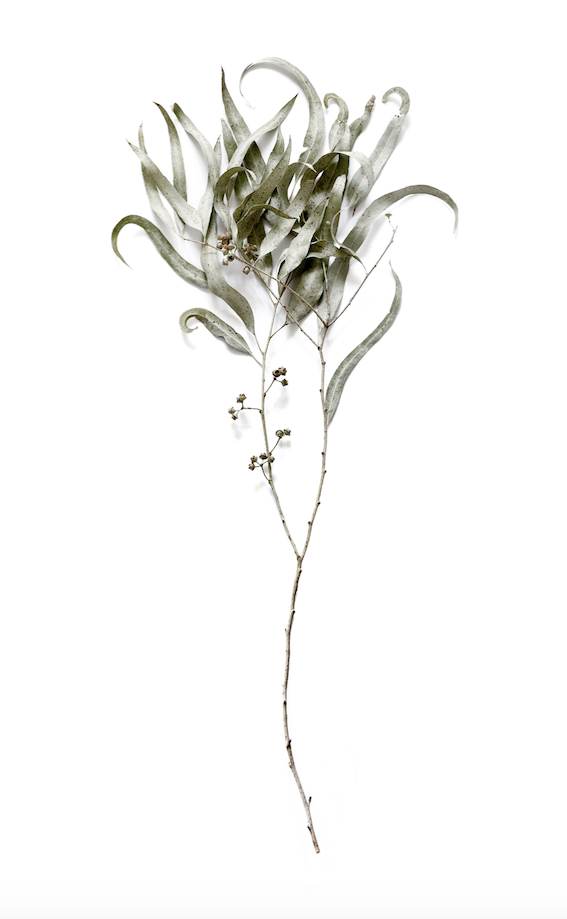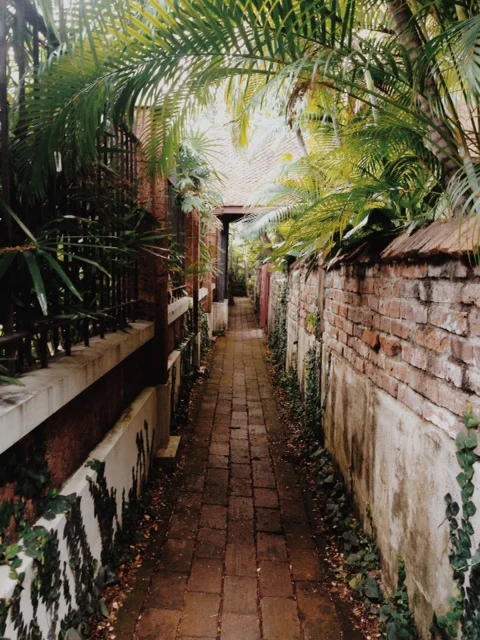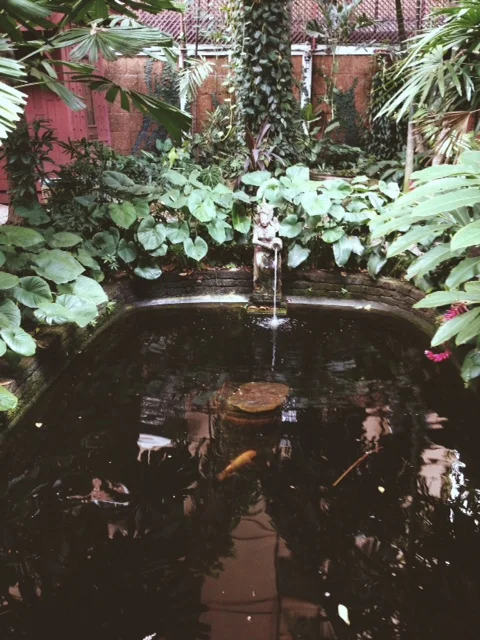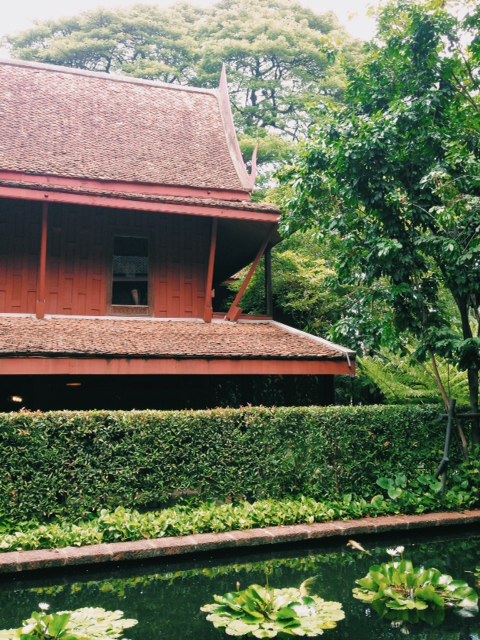Landscaping is an important aspect of the design process at Grounded. We usually populate the landscape with native local species to reduce water use for irrigation. Our landscape design aims to blur the lines between the two textures- the verandah flooring, the green cover, and the soil. We pick local species that can co-exist and help give the landscape a naturally verdant look, rather than an unnatural manicured one.
A Blog
with a curation of our design ideas and inspiration for houses in Goa, contemporary art and architecture.
Archive
- A Grounded Palette 12
- Architecture 86
- Art 22
- Bangalore 1
- Conservation 6
- Design 39
- Designing a House in Goa 16
- Ecological Design 20
- Environment 38
- Geoffrey Bawa/Bijoy Jain 6
- Goa Ecology 7
- House for Sale in Goa 20
- Interiors 17
- Landscape 3
- Landscape Design 9
- Life 23
- Lifestyle 10
- Living in Goa 34
- Mentoring 4
- Moving to Goa 24
- Navovado Project Update 4
- Nivim Project Update 33
- Press 11
- Resort-style Lifestyle 14
- Sustainable Architecture 20
- Sustainable Design 18
- Toybox 1
- Wellness 5
- reed bed 1
What does it mean to incorporate nature within our built-in environment? What does it mean to reconnect architecture with nature? What are the benefits and how does it impact our lives?
Tune in today to hear Founder and Principal Architect, Anjali Mangalgiri at Grounded, an award-winning architecture and development firm based in India and Singapore talk about the power of reconnecting architecture and nature.
Read On
IMAGE OF MY SEED COLLECTION
Last week, I was interviewed by Priscille H Joseph on her podcast 'Design Talks'. She asked me what I mean when I say 'reconnect with nature'. I have thought about it, and more than anything 'reconnecting with nature' is about a mindset. We are constantly surrounded by the wonders of nature, 'a reconnection' is possible by simply being in tune with nature and its cycles, and to begin to observe and attach value to nature's wonders that surround us.
I enjoy observing nature closely. I personally have a special fondness for 'seeds'. I have become somewhat of a part-time seeds collector. I’ve gleaned quite a collection of seeds from my walks and travels, and they are peppered around my apartment. This is an obsession of sorts and I really enjoy admiring their unique forms.
Seeds come in many shapes and sizes. The primary objective of seeds is to disperse and propagate life. The size, shape, color and smell are all reverse engineered from their method of propagation. Some seeds have the ability to take flight, like the Dandelion and Maple Helicopter Seeds. Others are colorful to attract birds and some have a strong scent to attract large mammals. I am fascinated by this diversity. And more than anything, I am fascinated by the complexity of shape and structure that these seeds present. No person's imagery can do better justice to these wondrous creations than photographer, Mary Jo Hoffman and her Still Blog. I am adding some images below, breath them in....
YOU MAY ALSO ENJOY THESE:
I was in Bangkok recently and following Pallavi's recommendation, I visited the Jim Thompson House.
Jim Thompson, an American architect who settled in Thailand after the World War II became a very successful silk trader and a celebrity of sorts in Thailand. His house in Bangkok is a collection of 4-5 original Thai wooden homes that he brought from villages and re-reconstructed on the current site in Bangkok.
The wood used to build the houses gives an incredible amount of warmth to the interior spaces. Walking on teak wood planks on the floor feel like walking on silk.
The landscape was the part that was most fascinating to me. In his original plan, he had planned for multiple courtyards, forecourts as well as a forest. There were lily ponds flanking the entrance courtyard which led to the forest, a tropical forest with meandering path ways and a little hidden pond with a tiny fountain. I loved the meditative quality of the forest space the most. I loved the treasures tucked away, where you could hear the water but not see the pond until you arrived right in front of it. At every corner, there was something new to admire, a new type of flower, a new fragrance coming from somewhere, a stone antique or a partial view of the house or another courtyard.
The art of architecture, when done right can engage all the senses at once. A prime example of space bringing happiness...
Jodhpur is a beautiful city, with a majestic fort, luxury hotels, incredible shopping and even a zipline for the adrenaline junky. To add to it all, I found another visionary piece of the city quietly tucked away in the hills below the Mehrangarh Fort.
Rao Jodha Park, is a one of its kind, concerted effort in India to restore the natural ecology of a place. The large, rocky wasteland (now the park) had been taken over by Baavlia, a foreign invasive shrub from Central America.
Baavlia, a fast spreading plant (some consider it a weed) was introduced in Jodhpur over a century ago. It was originally thought that this magic plant would provide abundant grazing for the cattle in the city. The result however was that, it killed all the native plants in the area, and the animals refused to feed on it.
In 2006, identifying this as a problem with long term environmental damage, the Maharajas of Jodhpur initiated a project to restore the area to its original ecosystem. I was told that eradicating the Baavlia, sourcing seeds of original native species and allowing them to thrive once again was an arduous task. But the result is beautiful, it is a piece of historic Thar desert landscape, that is dry, rocky, with surprising bursts of color and water!
I am a huge optimist and any small measure of thoughtful action makes me happy and brings me joy. So I loved being in the park, listening to the stories, learning about the desert landscape by exploring, taking in the sights and smells. It is a great place to wander and wonder about the complexity of nature, its delicate balance and yet the resilience and longevity of it.
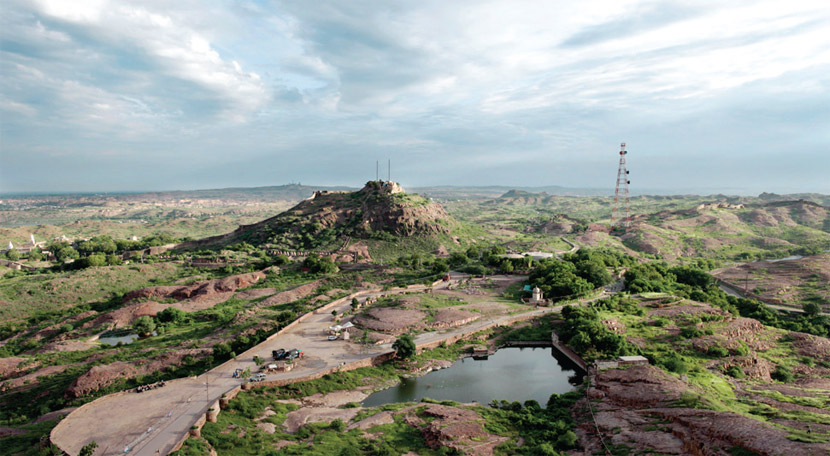
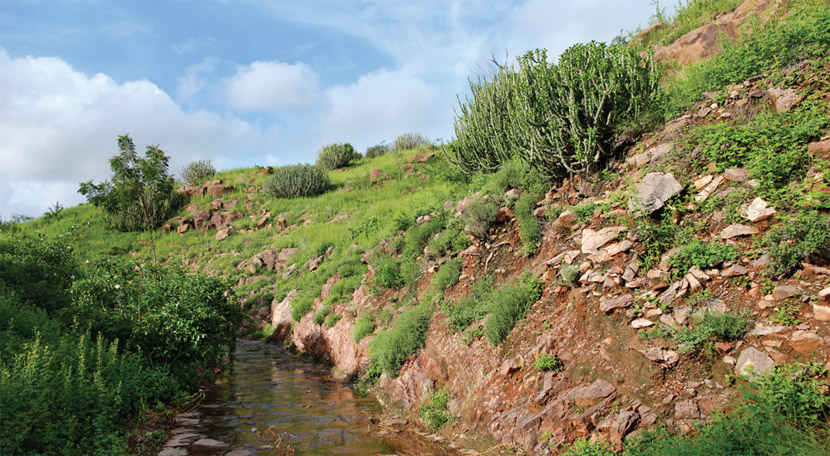
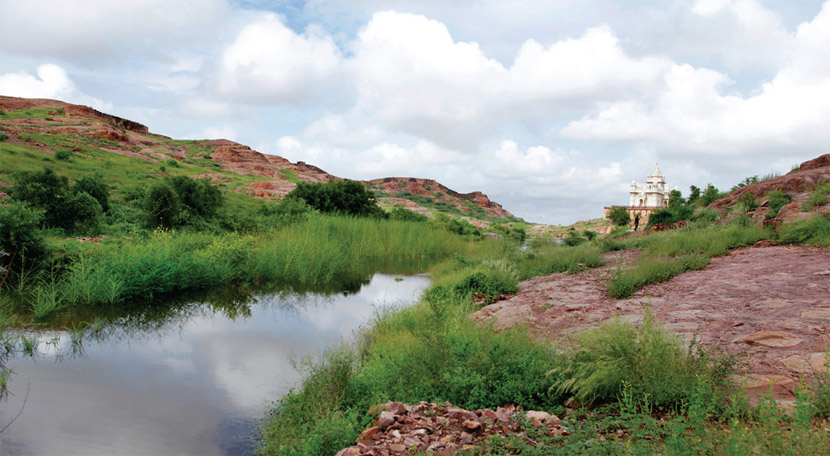
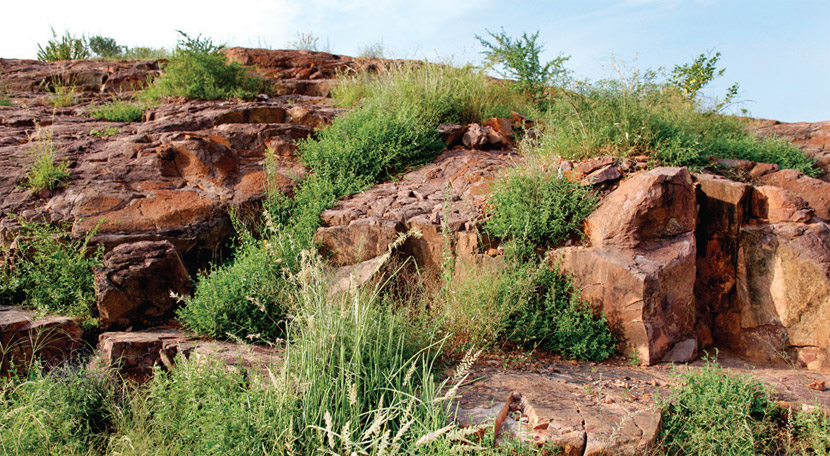

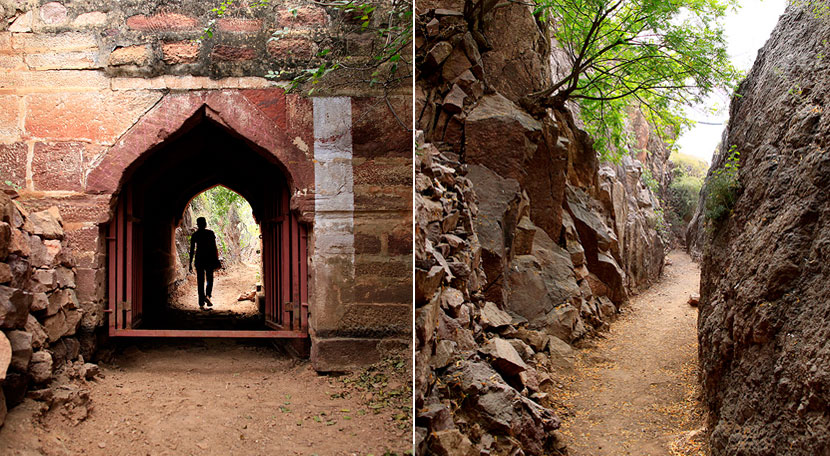
Why are native plants important ? Native plants are the species of plants that have adapted to the geographical and climatic conditions of a particular place. They are a vital part of the local food chain and natural ecosystem that has balanced itself over many years. They do not require additional irrigation, fertilizers, or other resources to grow. Once taken root they form a part of the ecosystem and can peacefully co-exist with other varieties of local flora and fauna. Finally, many traditional practices and livelihoods in the local area may also depend of the local species, such as traditional medicine, fodder for cattle, shelter, crafts, etc.
All images courtesy of Rao Jodha Park website and Motherland Magazine Ecology issue.
Here is a video of what it feels like to spend a day at Nivim as the light changes from morning to evening.
We are the first green certified residential building in Goa !
Nivim was awarded a Gold level green homes certification from the Indian Green Building Council. We are celebrating !
Read about the green features at Nivim Goa, at our previous blog post.
In simple words any new construction specially on a greenfield site (where there were no buildings before) has a negative impact on the environment (scroll down for why?). But the reality is that we need buildings and implementing green building practices help us in reducing the impact of the building activity on the environment.
How does building activity impact the environment:
Buildings consume large amounts of material and energy during construction and generate waste
Buildings continue to consume energy, water and other resources during their lifetime along with continualy generating waste (domestic waste, solid waste and water waste)
A building on a previously vacant greenfield site changes the land and its relationship to the surrounding environment:
buildings change the natural landscape of the site by reducing existing vegetation, changing natural topography, and water flow patterns
buildings create concrete barriers to absorbtion of water back into the earth thus increasing storm water runoff (leading to flooding of low-lying areas and additional burden on existing infrastructure) and fall in underground water table (due to reduced recharge)
Loss of natural landscape also results in the loss of habitat for animal and bird life
Materials used in a building have a direct correlation to the health of its residents
Most of the above reasons are fairly well understood in the building community then what are some of the reasons that green building practices are relatively inaccessible to the everyday builder? even when they are driven by common sense and reflected in many traditional construction practices. We have found that:
There is increasingly a lot of superficial jargon surrounding green buildings that needs to be shed
It may be easier to start from our backyard rather then wait for top-down government led infrastructure development and policy formulation
There are available green certification processes than can offer a system of checks and balances but sadly the industry is disillusioned about them or find them too tedious and expensive
Project planning is the key to success. It is vital that at all stages of design and construction; the builder makes choices that minimize the impact on the land, reduces use of energy, optimizes use of water resources, prioritizes reuse and recycling instead of use of virgin materials and reduces waste.
Down to Earth is without question, the leading science and environment magazine in India. The magazine takes leadership in addressing issues and concerns related to environmental issues. It is one of the few magazines that has laboriously researched articles where the editors try their best to not take sides and put forward the facts.
Down to Earth has been leading the way in sound publishing regarding green buildings as well. They have recently compiled all their articles and resources on green buildings in one portal.
.
Screenshot of Down to Earth magazine resource page on green buildings, link.
Our favorite section is the one called '6 Cardinal Directions for Better Buildings', namely:
1. Thermal Comfort
2. Ventilation
3. Light
4. Water & Energy
5. Building Materials
6. Safety & Design
While, architects, builders and institutions debate the relevance of green buildings, the need for certification and Griha vs. LEED; here is Down to Earth saying that green buildings in not a new science but simply a building built with common sense while being cognizant of the above 6 factors and their impact to the quality of any/ all buildings. We absolutely agree with that.
Here are a few other gems from the magazine that we love:
- Architects love brick as a building material, it is low-cost, easily available and has the natural earthy aesthetic quality. These factors often make 'brick' come across as a green material. But here is an article that challenges that notion with facts on energy use during the traditional brick making process as well as loss of cultivable soil impacting agriculture and lastly the pollution from the kilns.
Link to Infographic at Down to Earth- This is a link to a great infographic that lays out the 22-step process required to obtain permits for any building project. This may make you laugh-out-loud but is so very true. Link to related article.
Link to 'Dampness' Infographic on Down to Earth - A great article on Dampness with yet another winning infographic.
We love you 'Down to Earth'. Thank you !
A traditional Boali, or water tank in Nizamuddin in Delhi. Now clogged with garbage and waste
It is World Water Day and an excellent time to remind ourselves that Water is an extremely precious resource.
We have implemented many interesting strategies to save, store, reuse and recycle water at Nivim. We have actually found that water efficiency strategies are some of the easiest to implement. We promise you a lengthy post on our efforts with water soon.
Until then, here are four great reminders of our need to save water in India..
1. TED Talk by Anupam Mishra on the traditional methods of rain water harvesting in the desert region of Rajasthan.
2. An article on the pollution of our rivers specially the once mighty Ganga by Sunita Narain,
http://www.downtoearth.org.in/content/kumbh-time-come-clean
3. An article on the water woes in India,
http://www.nytimes.com/2013/03/13/world/asia/rains-or-not-india-is-falling-short-on-drinkable-water.html?ref=global-home
Image courtesy Down to Earth
4. An article on the daily consumption of water in India and ways to reduce water use in a household,
http://www.downtoearth.org.in/content/need-vs-greed
Hope that these articles begin to answer the questions on the need to save water, ways to begin thinking about it and why we must act now or it will be too late ....























